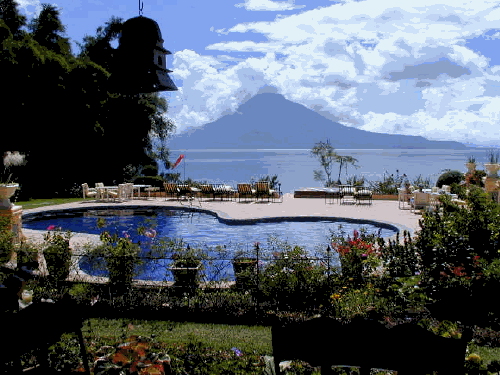
Chapter 4
Our next stop was at beautiful Lake Atitlan high in the mountains.

The view from our hotel was breathtaking.
After lunch at our hotel in Panajachel we went to a boat in town and sailed to SanAntonio Palapo.
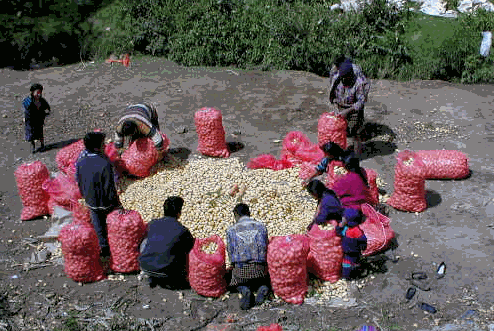
We traveled through many little villages — most ending in "tenango" meaning "place of" — similar to the addition of "town" to many English place names. We see many people alongside the road working with or selling their vegetables. The potato workers were washing and bagging tons of good looking potatoes. (Some were thrown at us for stopping and goggling — so much for good will.)
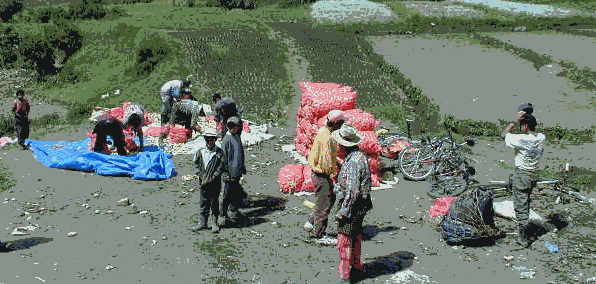
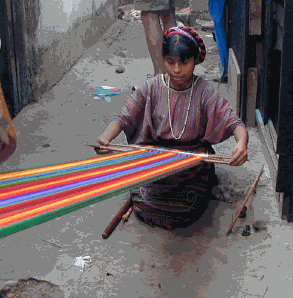
and her sister on a foot loom was in another area down the hill (16). Child labor laws are nonexistent here.
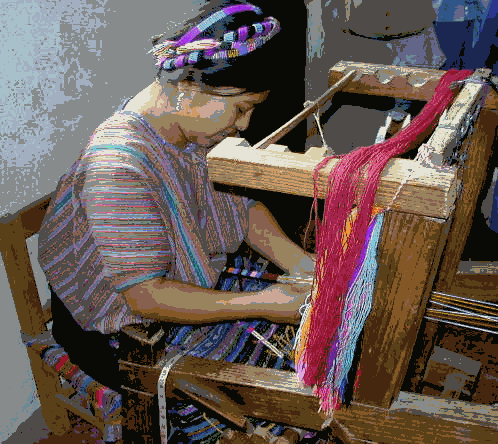
Next day’s excursion was to the market at Chichicastenango (place of poison ivy). Market day is the big event in all of these areas — where the Spanish language is kept alive; they shop for food, luxuries, wives, etc. and make what little money they ever have. I managed to shop for a lot of fascinating handicrafts and enjoyed the bright colors and general hubbub.
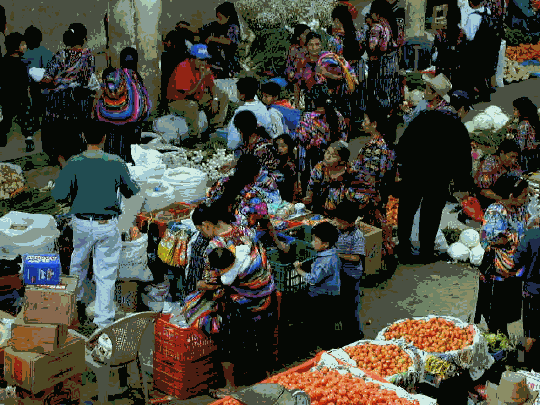
The process of bargaining is entertainment for all — one girl and I couldn’t understand each other when dickering over prices so we wound up writing numbers on our hands. By the time we each had 3 numbers scribbled, and had agreed on a price, we were all in stitches from laughing.
Fascinating transportation habits in Guatemala. There are people walking along roads all over the hills far away from any recognizable towns. Few cars on the roads but lots of pickups — usually full of people, often standing - on trips to or from the nearest town. And if you’ve ever wondered what happens to old school buses, they’re living a second life in Guatemala — mostly in the cities. They seem to be the major form of urban transportation. In the rural and mountainous areas, newer and hardier type school buses operate — usually highly decorated by the owner/operator who caries people to and from many areas with little comfort and much "machismo". Pedestrians DO NOT have the right of way.
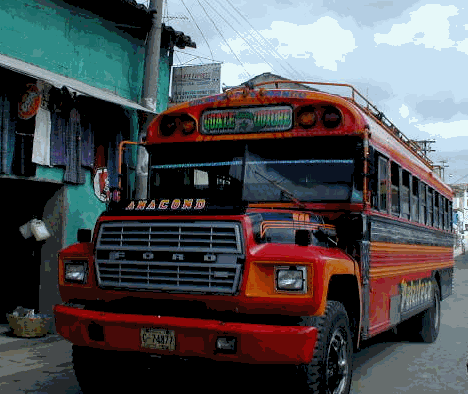
The next day we visited the market at "San Francisco" which was supposed to be the biggest and most typical in Guatemala. Stalls were crammed in with narrow aisles; many of the people were dragging pigs, cows, or skinny dogs. Our local guide seemed to be determined to lose us in there before we got to the church he wanted us to see. It was very confusing and not at all fun. We had been warned about pickpockets but three of the people in our group still lost wallets, credit cards, travelers checks, etc. It was the most crowded and most uncomfortable area we had been in, and several of us got out of there and went back to the bus early. There were several fabrics and interesting areas I would normally have investigated but much too "pushy/shovey" to want to linger. Even I can give up shopping when feeling threatened.
The demonstration I found most interesting was that afternoon, back in Quetzaltenango. We visited a residence where the whole family was involved in the weaving of "ikat" fabric. This is the heavy-weight cotton fabric with the beautiful designs that all of the women in this area wear as skirts. It is made by bundling white thread into groups and tying strings around it in particular patterns — that they keep in their head. Then the wads are dyed black, the strings untied to show white underneath (original tie-dye process?) and when separated on a loom the colors are woven through it. Fascinating process with a beautiful result.